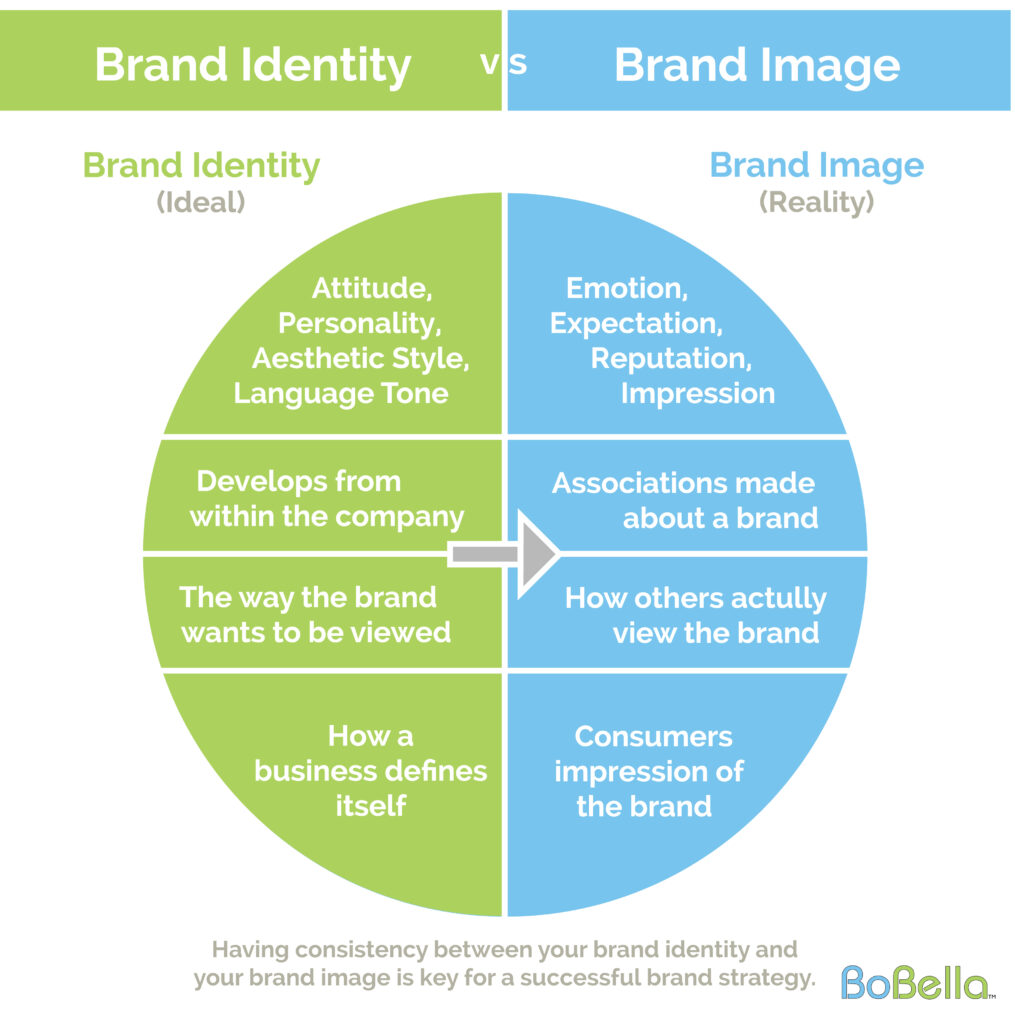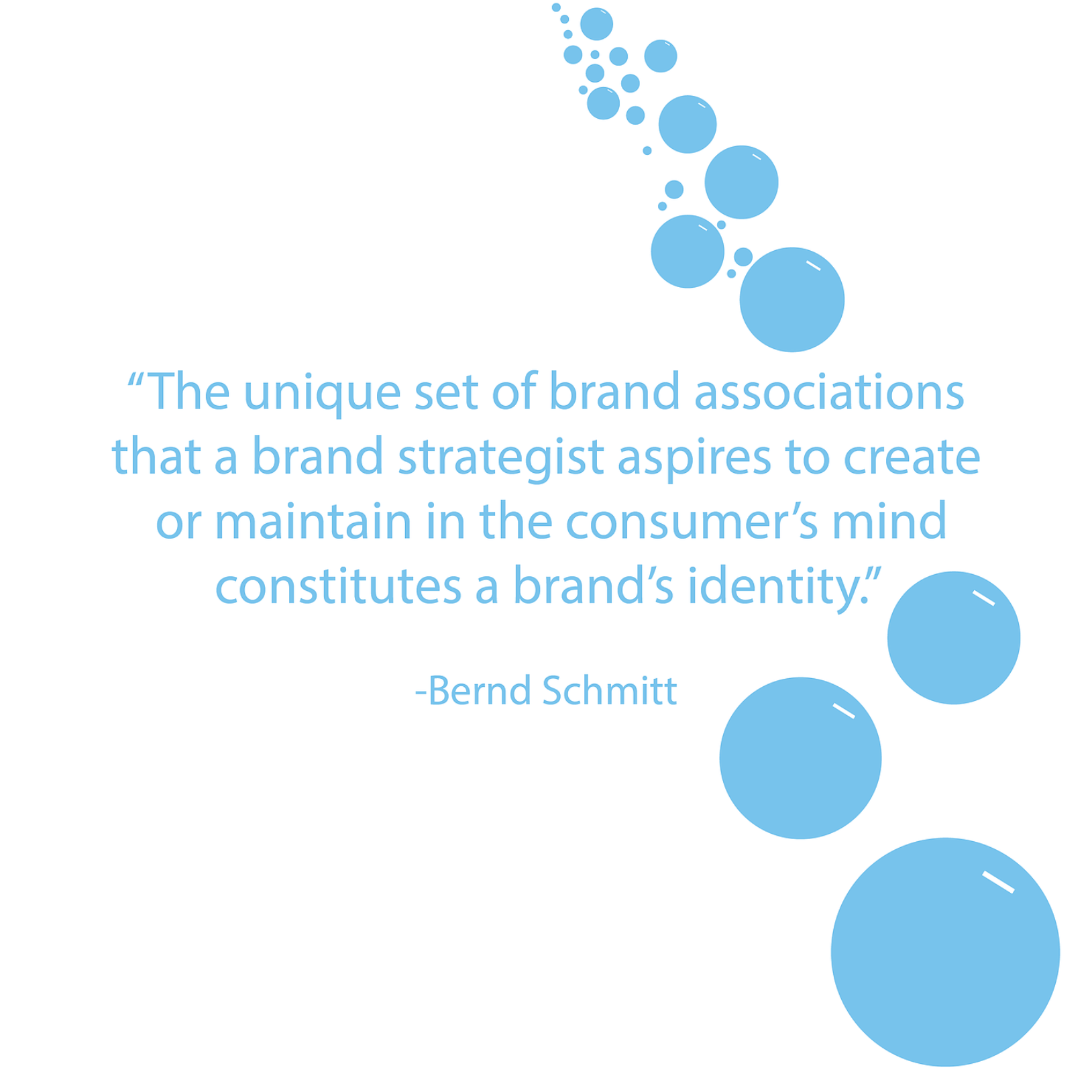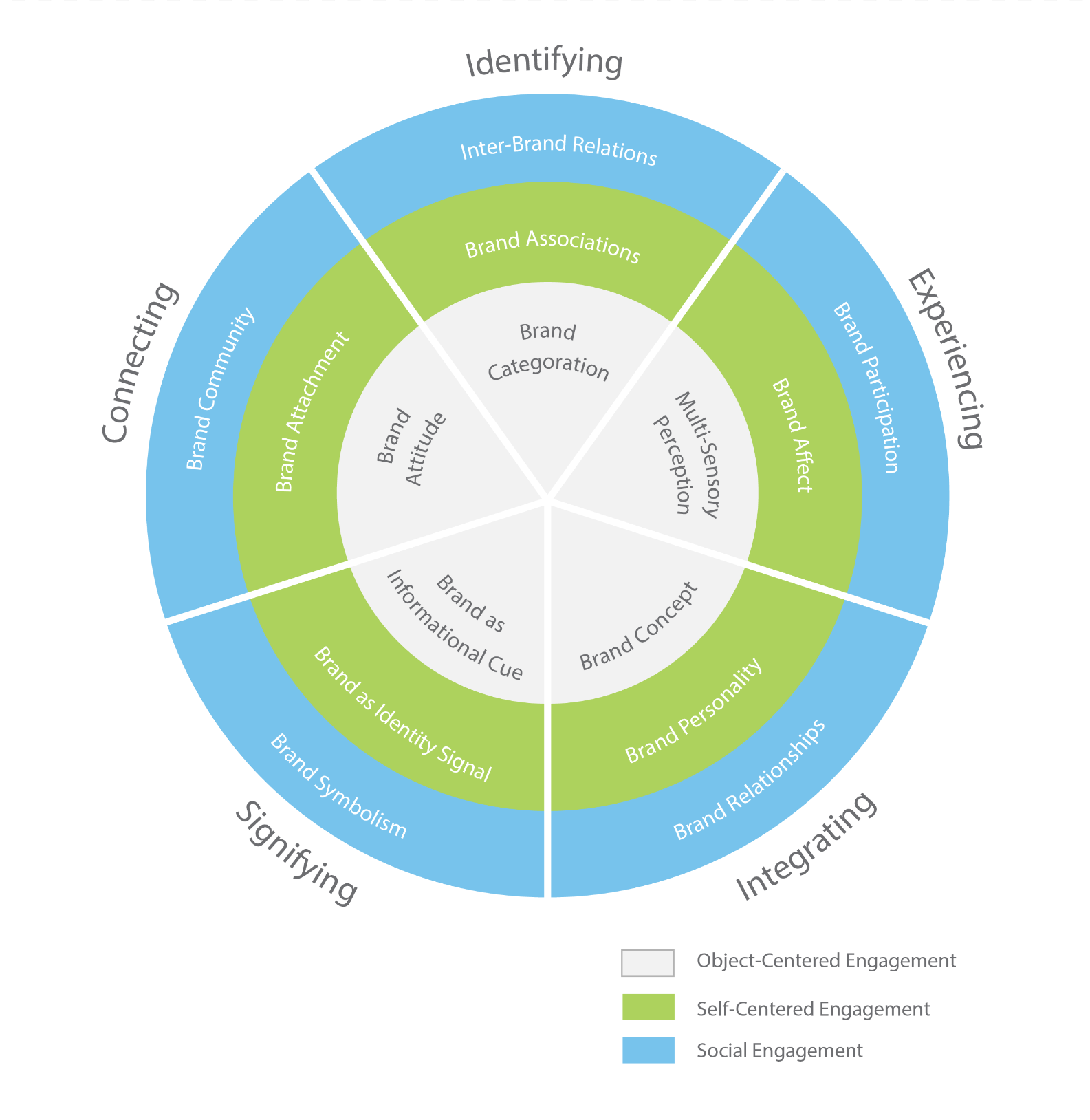Have you ever thought about where the concept of “branding” comes from? From the start of the marketplace, there have been trademarks and other symbols for craftsman to distinguish their…brands, if you will. Cattle and sheep were branded with hot irons to let consumers know what farms they were from, and of course, to assure buyers of the quality of their meat. In 2018, correct branding can symbolize a products “quality” very similar to how brands were used in early history regarding cattle, but there may be a little more to it these days.
Recent studies suggest the foundation of a brand can be seen as a psychological model based on human perception. What does that mean exactly? As Bernd Schmitt states in The Consumer Psychology Model of Brands, “Different consumers have different levels of psychological engagement with brands because of different needs, motives, and goals.” To further explain, I’ll start with one simple fact, your brand encompasses two entities: Brand Identity and Brand Image.
Brand identity is your ideal internal personality; meaning, it is how a company views itself and the way you want your consumers to view you. Your brand is your company, your employees, your events, and everything else about your enterprise. Correct use of brand identity motivates and retains employees, thus making your company run more efficiently because everyone is on the same page. Logos, taglines, aesthetic style, and language tone all contribute to your brand’s identity. On the other hand, brand image is the reality of your brand – it is what consumers see, feel, and think about you. This includes your reputation, emotion, impression, and beliefs.

Another way to find your brand’s personality and attributes is through concept mapping. Brand concept mapping is essentially a diagram you create centered from the core of your brand with all relevant brand attributes branching from it. In short, concept mapping and brand personality work together to help understand a brand’s identity. Here at BoBella, we use these models to understand each of our clients’ brands personalities so that we can develop an appropriate brand identity.

Brand image is very important because it is how consumers view your brand – you want your brand to be viewed externally the same way it is viewed internally, thus, aligning your identity with your image. Your logo, website, storefront, and marketing collateral all play into brand image. “But, how are brands viewed by external subjects, what does that mean?” you may be wondering. The answer is psychology. In 2012, “The Consumer Psychology of Brands” by Bernd Schmitt was published in The Journal of Consumer Psychology with a model showing consumer perceptions and judgments related to brands.

This model distinguishes five brand related processes: identifying, experiencing, integrating, signaling, and connecting with a brand. When a consumer identifies a brand, they associate it with the product category and automatically compare it with other brands. Experiencing a brand includes touchpoints, which are multi-sensory stimulations through sight, sound, smell, touch, and taste.
For example, if your brand has a well-known slogan or jingle, a consumer may think of your brand when they hear a similar tune. Or, if you spray a scent consistently in your storefront, a consumer will remember your product(s) when they smell the scent again. Your brand can also affect emotions and mood, known as emotional branding – warm colors give off different feelings versus cold colors in your website or logo or store design.
Integrating is the beginning of a consumer’s summary of your overall brand concept, also referred to as the brand image. Your brand may be considered a signifier that recites specific meanings to consumers. For example, consider a brand that represents cultural values (Grey Goose is featured in music and videos targeted towards a specific niche market), or a brand that represents a generation (such as how Abercrombie & Fitch is considered a millennial brand). Your brand may also be used to help someone signal his or her individual identity. An example, consumers may buy your brand to express the way they feel about themselves, others, or conclude their own identity from a purchase (“I bought a Mercedes because I view myself as successful,” “I bought a Mercedes to show my peers I am successful,” “I am successful because I bought a Mercedes”).
The final step in the “Consumer Psychology of Brands” model is connecting. Connecting is indicated by a consumer’s attitude and attachment to a brand, which could indicate a consumer’s intentions of repeat purchasing. All of these psychological factors are your image – emotions, reputations, impressions, and beliefs of your brand from consumers.
As you can see, brand identity and brand image have to be harmonious for a product or service to sell. It is recommended that you work with a professional agency to help your brand be the best it can be. BoBella’s team digs deep to get to know a company’s internal brand identity and external brand image and then aligns them to create a unified perception. It is an intense process of colors, fonts, strategies, logos, websites, concept mapping, and more to create a valued brand. And, yes…we have come a long way from hot irons.
Brand Identity and Brand Image





